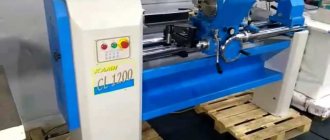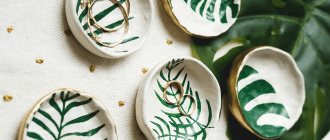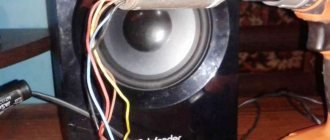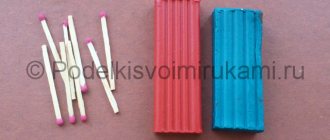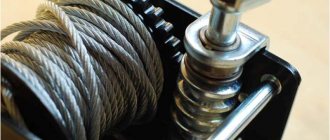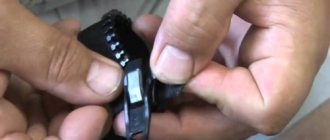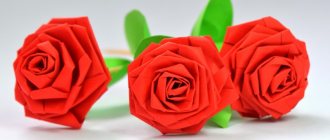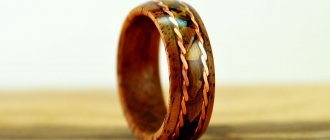Doing something with your own hands is always pleasant and somewhat unexpected. Moreover, today you can do this not only for the soul, pleasing yourself and your loved ones, but also to produce some products for sale. The Internet world provides all the tools for this: you don’t need to go to the market, stand behind the counter - everything can be done through advertisements or your own online store on the Internet.
Souvenir lamp
Therefore, a new direction has become very popular - creating plexiglass products with your own hands. Let's figure out how this can be done, what you can get and what nuances and secrets there are in all this.
Material advantages
- Resistance to ultraviolet radiation. The radiation does not make the material yellow or brittle.
- Excellent light transmission. Considering the composition, glass can have a transparency of ninety-five percent.
- Resistance to chemicals: acids, salts and alkalis cannot adversely affect the material.
- Ease. Plexiglas is 17 percent lighter than polyvinyl chloride and almost three percent lighter than ordinary glass.
- Waterproof. The material is successfully used to create various products that come into contact with water: aquariums, even yachts and ships.
- Strength. According to this indicator, plexiglass is five times superior to ordinary glass. Consequently, the service life of such material is much longer.
- Environmentally friendly - minimal release of harmful substances. The production of plexiglass products is not harmful. The combustion temperature of the material is 460-635 degrees. At the same time, hazardous substances are practically not released, as is the case with other types of plastic.
- Resistance to low temperatures. Even severe frosts do not affect the quality of the material.
- Is a dielectric. Therefore, it can be safely used in places where there is a possibility of stray currents.
- Ease of processing. This allows us to organize the production of plexiglass products of varying complexity and colors. Thickness can vary from one to twenty-four millimeters.
Industrial processing
When heated, plexiglass . Thermoforming does not violate the optical properties of the material; it remains transparent and does not lose its external properties.
All scraps, pieces and production waste of plexiglass, as well as products made from it that have served their useful life, are used for the manufacture of new products.
The secondary product is not inferior in characteristics to the original one , if there were no violations of technology and the permissible temperature conditions were observed. The optimal temperature for molding is 160-170 degrees . Excess may lead to destruction of the polymer, as a result of which the raw material will become unusable.
Recycling of plexiglass occurs according to a standard scheme, which is typical for most types of plastics:
- collection and sorting;
- washing and crushing;
- extrusion or casting.
Disposal of scraps and plexiglass waste does not require additional highly specialized equipment .
All processes take place on units that produce primary polymer; secondary raw materials are simply used as an additive.
It is important that the raw materials do not contain contaminants , metal inclusions and have a fraction acceptable for the equipment.
It is also possible to process plexiglass by pyrolysis. There is a separate article on pyrolysis processing of plastics (Plastic Pyrolysis). When pyrolyzed, plexiglass releases a toxic monomer - methyl methacrylate .
What can be made from the material
The range of applications of organic glass is constantly expanding. For example, very often such material is used for the manufacture of structures for outdoor advertising (signs, letters, plates, etc.) or souvenirs - products for advertising purposes. As a result, plexiglass is an excellent material for branding retail outlets and other establishments. Thanks to the ability to combine glass with other materials, you can create original designs that attract attention.
Also, plexiglass products can often be found in supermarkets. For example, in the form of food containers or containers for fruits and vegetables.
In everyday use, the material can be found in the form of vases, dishes and other decorative elements, and bathroom accessories.
The material is also used for roof glazing, for example, greenhouses or picture glazing.
Due to its ease of processing and wide application, plexiglass becomes a good basis for creating your own small production. You can create various stands, price tag holders, souvenirs, etc.
Where to put the figurine
Choosing a place for a simple figure or a sculptural composition is an important point. After all, an artificial object must harmoniously connect with the natural landscape and fit into a single style. Following simple rules will help you find the right place:
- Draw a plan of the plot or garden on which to schematically distribute decorative decorations.
- Choose a background that matches the sculpture:
- small figures will not get lost in the open spaces of lawns;
- fences, flower beds, benches, front gardens are a suitable background for placing decorative objects;
- tall trees and shrubs are combined with large sculptural compositions in white and bronze colors.
- Select garden sculptures in accordance with the style of the garden or site.
- Do not combine incompatible things - connect the figures with each other and with the landscape, observing the rules of proportionality and appropriateness.
Types and applications
- Transparent. It is a colorless, transparent sheet with a smooth finish and a high sheen. Its light transmittance is 92 percent. It is used to create screens to protect various devices, for the production of shop windows, and glazing of buildings.
- Colored transparent. The material differs from the first option in its uniform coloring. The most popular colors are gray, brown and blue. It is used for the production of partitions, stands, aquariums, advertising items, and vehicle glazing.
- Corrugated transparent. In this case, on one side of the product there is a relief pattern, and on the other there is a smooth surface. It is used to create various decorative elements for interior design, furniture, glazing of shower cabins, doors, etc.
- White matte. Such sheets transmit light by 20-70 percent and have a shiny surface on both sides. They are used to create advertising structures, podiums, suspended ceilings, and illuminated floors.
- Colored matte. A complete analogue of the previous type, only with uniform coloring.
Variety of products
Products made from organic glass are different. Using such material, you can make any fantasy come true. Almost anything can be made from plexiglass, for example:
- transparent frames;
- advertising stands;
- shelves;
- souvenirs;
- cups;
- stands;
- voluminous pockets;
- crafts;
- PC cases;
- frames;
- figurines;
- watch;
- covers;
- tablets for watercolors and even medals.
While in some areas of activity this material has been used for a long time, in others it is just beginning to gain popularity. Organic glass is most often used in several directions.
To create lighting structures
This group includes the following:
- acrylic lamp covers;
- illuminated signs;
- face shields;
- various light diffusers.
In the field of architecture
There is room to show your imagination here, because using plexiglass you can do the following:
- multi-colored or regular domes;
- cubes;
- room partitions;
- doors with glass inserts;
- dance floors and much more.
In plumbing
Since this material is not afraid of moisture, it is used most often in this area. From acrylic you can make such elements as:
- tubes of different sizes;
- shower cubicle box;
- swimming pools;
- various items for the bathroom.
For room decoration
Many people try to transform the interior of a room with the help of such things as:
- elements of furniture, such as tables or chairs;
- art installation;
- transparent panels;
- aquariums of different shapes and much more.
In the field of trade
Most often, organic glass is used to create elements such as:
- shop windows;
- signs above them;
- banners;
- numbers to indicate houses and much more.
At home
Here you can find products made from this material at every step. These can be the most unusual items, for example:
- modern awards;
- key chains;
- board games, such as backgammon or checkers;
- business card holder;
- coffee tables;
- bookshelves;
- glass on the table;
- flower stand (regular or in the form of a rod);
- sconce and much more.
In medicine
You shouldn’t bypass medicine, because here they make the following from plexiglass:
- regular contact lenses;
- glasses for glasses;
- artificial dentures or orthodontic appliances.
In addition, in modern underwater vehicles the windows are made of acrylic. Also, the outer glass of headlights in cars is often made of polymethyl methacrylate. Plexiglas is usually used to make protection for spectators at stadiums or skating rinks. Looking out the window of an airplane, it is difficult to guess that it is made of this particular material.
Tools
To process the material with your own hands, you will need to use certain tools, but it is not necessary to buy them. To create products at home, simple techniques and equipment will be enough. For example, using strong thread, you can make products of the most complex shapes.
Therefore, you can prepare a similar set:
- table;
- ruler;
- sharp knife;
- spiral made of nichrome wire. It can be taken from an old step-down transformer. You can see what it looks like in the photo.
You can make a thermal cutter yourself. It is a wooden frame containing nichrome wire. The device operates under a voltage of 6-12 Volts.
To bend a sheet of plexiglass in a straight line, you should heat the area along the bending axis.
To cut sheets, you can use an improvised cutter made from an old blade from a hacksaw for metal. For ease of use, one end of the canvas should be wrapped with electrical tape. You need to cut the sheet on a flat surface. The blade can be sharpened with a stone. We put a ruler on the sheet, draw it several times with a cutter, then remove the ruler and cut it. As a rule, edges after cutting do not require further processing.
Designer bracelet
Amazing accessories with any filling are cast from epoxy resin. We offer an interesting lesson on how to create an original bracelet.
Bracelet with flowers
Bracelet with grass and red berries
Bracelet with delicate flowers
It will be useful at work:
- special mold for the bracelet;
- two-component resin with hardener;
- plastic container for mixing the mass;
- wooden stick;
- dry leaves or flowers.
Tools that will be useful are simple toothpicks and scissors, as well as sandpaper for grouting.
DIY bracelet made of epoxy resin and wood
Let's get started:
- Wash and dry the uniform. Let's knead the epoxy “dough” in the proportion specified by the manufacturer. Stir the mixture until the bubbles come to the surface.
- Let's prepare the decorative filler. We trim the leaves so that they do not stick out from the mold.
- When the resin has thickened and settled, carefully pour it into the mold.
Filling must be done slowly, in a thin stream. The more accurately the substance is poured into the mold, the less polishing the product will require.
- Immediately place the leaves in the resin in a circle, straightening them with a toothpick. To get all the air bubbles out of the resin, you can put the mold in the oven for 10 minutes, heated to 80 degrees, and then turn it off.
- After heating, take out the workpiece and leave it to harden.
When the decoration has hardened, remove it from the mold and sand the rough edges and rough edges with fine-grained sandpaper. To make the surface of the bracelet glossy, open it with acrylic varnish.
DIY bracelet made of epoxy resin
Recommendations
First, you should purchase several sheets and experiment, starting with the simplest shapes and figures. You can make stands for displaying goods, which can be found, for example, in mobile phone stores.
If you plan not just to work as a hobby, but to earn money, it is better to produce products to order. Then you can take an advance payment for materials from each client. If you create products for subsequent sale, you will have to invest your own funds, and then be prepared for the fact that you will have to wait until these funds are returned.
How to make a sculpture
In order to sculpt a figurine from clay, you need to prepare it - fill it with water and let it sit for three to four days. To make a small figurine, a frame is not required, but for a large sculpture you cannot do without it. But the foundation is required for any composition. So, the sculpting process consists of the following procedure:
- Draw a sketch or use a drawing as a reference.
- Take a piece of finished clay and knead it well in your hands.
- Roll into a ball if you need a disk shape.
- Blind all the necessary parts and glue them together, wetting the joints with water.
- Level the surface by smearing it with clay.
- Apply the desired design using tools.
- You can decorate with beads, shells, pebbles, etc.
- Air dry.
- Place in the oven and dry over low heat until the work takes on a pinkish tint.
Advantages of plexiglass
Plexiglas is used to make computer cases due to its advantages such as lightness, impact resistance and aesthetics. Most often, transparent plexiglass is used to create the case - many see a peculiar beauty in the open display of wires and circuit boards. If you want to hide the internal “stuffing” of the computer, use matte sheets.
To create a computer case, transparent plexiglass material is most often used.
The pliability of this material is also important - even a beginner can cut and glue it.
Safety rules when working with resin
In order to avoid harm from the vapors that are formed when mixing the hardener and resin (the polymerization process entails significant heat generation), it is necessary to follow some safety rules.
- Arm yourself with gloves.
- Wear a protective mask or respirator to prevent harm to yourself.
- Ventilate the room while working.
- Warn your household not to enter the room while you are busy, or be sure to wear a mask.
- Before you start work, organize your workspace so that you won’t be distracted afterwards.
If you don’t have a special surface to work on, you can use film or a simple file so you don’t have to worry about the table and what might happen to it during work.
What to glue
Whether it is a crack or the need to connect parts made of transparent material, you will have to choose what to glue the plexiglass with. The logical answer is a specialized composition. There are two types of these:
- solvent-based adhesive made of acrylic
- two substances of identical composition are combined with the help of a third, similar in composition, which ensures the transformation of all components into one whole; - — dries quickly, ideal for eliminating cracks.
In addition to glue, plexiglass will be combined with strong acids and some other caustic substances that are often found in the workshop: glacial acetic acid, vinegar essence, methyl alcohol, formic acid, dichloroethane (a very poisonous dangerous substance, but it glues tightly).
It will not be possible to glue plexiglass with vinegar, even if it has a concentration of 7 or 9%. Vinegar essence (70%) and acetic acid will do the job perfectly. The bonding procedure does not proceed very quickly, but the resulting seam is characterized by increased strength. Vinegar essence does not dissolve the surface of plexiglass, but only slightly softens it.
When deciding how to glue plexiglass, it is worth considering that all products, including adhesives, are divided into two groups according to the principle of action:
- The composition dissolves the bonded surfaces before joining, resulting in the formation of a monolithic seam; in some cases, such a joint is called “cold welding”.
- The surfaces do not dissolve, an intermediate layer is formed, which ensures adhesion of the areas covered with a layer of glue (such gluing is very fragile, since plexiglass has no pores, and there is nothing for the adhesive to cling to).
The best option would be to use glue designed specifically for polymer and acrylic glass.

